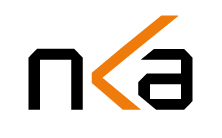New permanent exhibition at the Budapest History Museum’s Aquincum Museum from 25 June 2014.
History made from clay – The role of ceramics in the Roman period architecture of Aquincum
Exhibition at the Budapest History Museum’s Aquincum Museum
From 25 June 2014
The Aquincum Museum’s Archaeological Park has recently gained a new exhibition and storage building (Tegularium) with a walkway alongside it covered by a lean-to roof and pergola. The Tegularium’s wall along the walkway – nearly 50 metres in length and containing niches – provides space for a completely new exhibition.
This is the first time for the group of materials in archaeology commonly referred to as Roman bricks to get a whole exhibition of its own in Hungary. The use of fired clay in architecture is presented usually as a not particularly prominent segment of Roman material culture. Hence the number of exhibitions that show the real importance of Roman bricks in e.g. the history of architecture has remained low abroad as well. Opportunities for a comprehensive presentation of the subject have been also few at brick collections accessible to the wider public. There Roman bricks primarily served as an introduction to the objects form the modern period, which were given a more important role. The importance of Roman bricks and their significance as sources can only be conveyed by presenting several aspects simultaneously. These objects should not be treated only as parts of material culture. They reveal fundamental things about architecture, construction technology, the ceramic industry and its sociological context, military history, linguistic and literary culture and the process of Romanisation.
The Aquincum Museum’s Roman brick collection is of national significance in terms of both its size and diversity. Yet until now there have been few opportunities to exhibit this collection. There can hardly be a more urgent, pressing task than to present the amassed collection and expertise to as wide a public as possible. Thanks to its rich collection, history as well as the archaeological and architectural remains discovered here in the last 120 years, Aquincum is the perfect place to present the subject in a detailed and vivid way (from clay extraction through production phases to the use of bricks). The exhibition treats the subject not in a local or provincial context but as a chapter in the history of European architecture and Romanisation, the cultural process which united Europe durably and which still impacts us today.
The exhibition presents the material through four major strands with 16 subsections. The introduction follows fired bricks on their Rome-backed conquest of the world. The exhibition shows how they became part of Roman knowledge introduced in every corner of the empire. Among the advantages of brick as a building material (durable, sturdy, can be made almost anywhere, modular, can be customised easily) we have to include its role in making a series of characteristic Roman architectural solutions feasible. It would be impossible to imagine not only the oft-exhibited underfloor heating systems, but also the arches, domes or even aqueducts without ceramic building material.
The first major strand of the exhibition follows the manufacturing process. It illustrates the extraction of clay, the preparatory work, the moulding of ceramic building material, the tools, the workflow and its numerous techniques, the shaping of the final surface, the stamps and other marks. Thanks to the large number of surviving footprints and other impressions from the drying phase of brick production we also get a glimpse of the environmental and social context of the busy life in the workshops. The exhibition also presents the kilns found in Aquincum and illustrates the technological difficulties in production (e.g. deformed bricks and wasters).
The second major strand covers the various uses of ceramic building materials including underfloor heating, various types of floors, masonry work, arches, ceilings, vaults, roofs and their decorations. Each of the various applications made use of characteristic ceramic materials and architectural solutions. The exhibition aims to give as full a picture of these as possible. Particular attention is also given to the materials and techniques used in water engineering.
The third major strand presents bricks as inscribed objects, covering not only the custom of stamping bricks and the information brick stamps provide, but also the main types of brick inscriptions and their significance. Bricks for the army are valuable sources about the history of the military in general, and of the various units in particular, but everyday ceramic materials are also key to learning about daily life as well as linguistic and literary culture.
The final strand gives a brief overview of the academic research and its development. With ceramic materials from previous exhibitions, we can illustrate how our understanding of bricks as sources has changed over the past 120 years of Aquincum excavations.
The exhibition consists of eight large display cases (in niches) and richly-illustrated panels between them. The panel texts and object descriptions, as in other Aquincum exhibitions, are in Hungarian and English. Following the positive experiences of recent years, we felt it important to make use of visual reconstructions on the panels, which can be understood by everyone regardless of age, background knowledge or mother tongue.
Supported by the National Cultural Fund of Hungary
Curator: archaeologist Zoltán Havas



